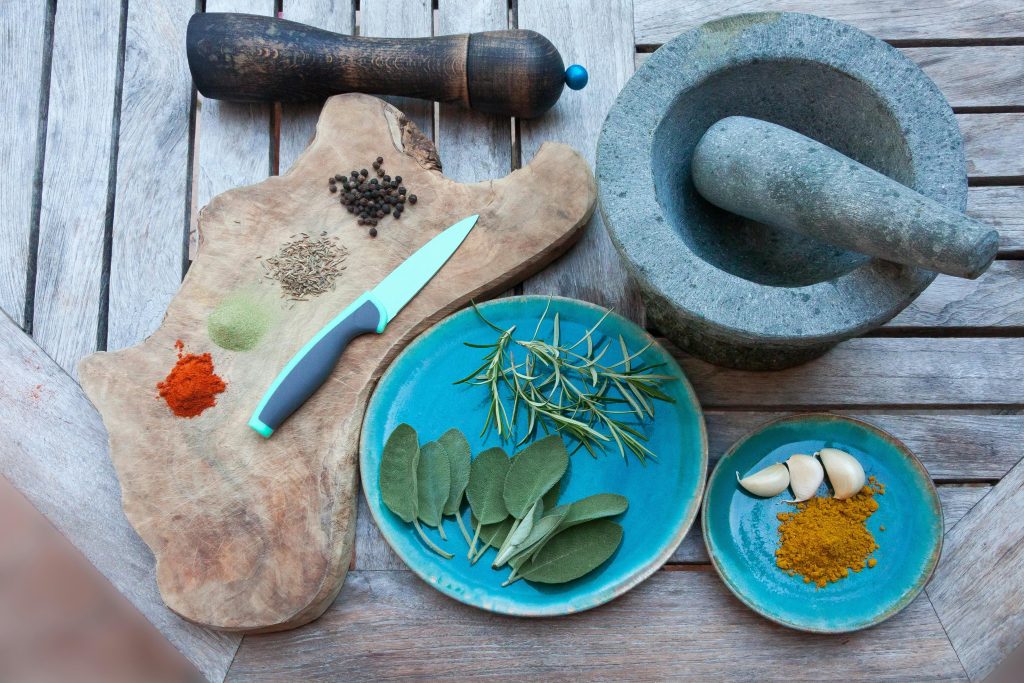Traditional medicine, herbal remedies, and natural healing practices have long been a part of human history, serving as a vital alternative and, often, a precursor to conventional medicine. Across cultures and continents, people have turned to the power of medicinal plants, folk wisdom, and holistic approaches to address a wide range of health concerns. These time-honored traditions are not merely relics of the past; they continue to be relevant and valuable in today’s modern world. Though we often attribute these breakthroughs to modern science, it is important to remember that much of what we consider ‘western’ medicine comes from medical folklore and practices.
At the heart of traditional medicine lies a deep understanding of the intricate relationship between the human body, nature, and the healing properties of plants. Generations of healers, herbalists, and traditional practitioners have meticulously studied the nuances of medicinal herbs, their active compounds, and their applications in treating ailments. This accumulated knowledge, passed down through the ages, offers a unique perspective on health and wellness, one that emphasizes the body’s innate ability to heal itself when provided with the right natural remedies. Keep reading below to learn more about these folklore medicines that transformed modern medicine.
Ginger: From Ancient Chinese Practices to Cutting-Edge Treatments
Ginger has been held in high esteem for its medicinal properties, with roots tracing back thousands of years in traditional medicine practices around the world. From its origins in ancient Asian and Middle Eastern cultures to its continued use today, this unassuming root has proven itself to be a true powerhouse of natural healing.
Delving into the rich folklore surrounding ginger, we uncover a mix of beliefs and practices that speak to its enduring reputation. In Traditional Chinese medicine, ginger was considered a “universal medicine,” capable of treating a vast array of ailments. Many other cultures also embraced ginger’s warming, stimulating properties, utilizing it to address issues ranging from digestive troubles to respiratory complaints.
But ginger’s benefits extend far beyond the realms of folklore and tradition. Modern scientific research has shed light on the impressive health advantages this humble root can provide. Ginger’s potent anti-inflammatory and antioxidant compounds have been shown to alleviate symptoms of conditions like arthritis, muscle soreness, and even certain types of cancer. Its ability to soothe the digestive system and alleviate nausea is well-documented, making it a go-to remedy for everything from motion sickness to morning sickness.
As we delve deeper into the wealth of evidence supporting ginger’s medicinal uses, it becomes increasingly clear that this ancient remedy deserves a prominent place in our modern healthcare arsenal. Whether you’re seeking relief from a specific ailment or simply aiming to boost your overall well-being, incorporating ginger into your lifestyle may very well be one of the wisest decisions you can make.
Turmeric: The Golden Spice with a Storied Past and Promising Future
Turmeric, the vibrant golden spice, is revered for its remarkable medicinal properties, deeply rooted in the ancient traditions of Ayurveda. For centuries, this versatile plant has been celebrated in folklore and incorporated into various healing practices across the globe.
At the heart of turmeric’s medicinal prowess lies its active compound, curcumin, which boasts a wealth of potent anti-inflammatory and antioxidant properties. Ayurvedic practitioners have long harnessed the power of turmeric to address a wide range of health concerns, from soothing digestive issues to promoting skin health and even aiding in the management of chronic conditions. From its potent anti-inflammatory properties to its potential neuroprotective effects, turmeric’s reputation as a true superfood is only growing stronger.
Beyond its clinical applications, turmeric has also been woven into the tapestry of cultural traditions, with its vibrant hue and earthy aroma playing a significant role in various religious ceremonies and folk remedies. From its use in traditional Indian cuisine to its incorporation into beauty rituals, turmeric has consistently demonstrated its versatility and its ability to captivate the senses.
Aloe Vera: From Egyptian Royalty to Modern Skincare Staple
Aloe vera has long been utilized for its remarkable medicinal properties, with a rich history in traditional medicine and folklore. This versatile succulent plant has been used for centuries to treat a wide range of ailments, from skin conditions to digestive issues.
One of the primary medicinal uses of aloe vera is its ability to soothe and heal the skin. The gel-like substance found within the plant’s leaves is rich in vitamins, minerals, and antioxidants that can help reduce inflammation, promote wound healing, and provide relief for sunburns, minor cuts, and burns. This makes aloe vera a staple in many traditional medicine practices around the world.
Beyond its topical applications, aloe vera has also been used internally to address digestive problems. The plant’s laxative properties have been leveraged to relieve constipation, while its anti-inflammatory qualities can help soothe conditions like ulcers and irritable bowel syndrome. In some traditional medicine systems, aloe vera has even been used to support liver function and detoxification.
Interestingly, aloe vera has also been imbued with symbolic meaning in various cultural traditions. In ancient Egypt, the plant was known as the “plant of immortality” or the “lily of the desert” and was often used in burial rituals. In traditional Chinese medicine, aloe vera is believed to have cooling properties that can help balance the body’s energies.
Today, the scientific community has begun to validate many of the medicinal claims surrounding aloe vera. Studies have shown that the plant’s active compounds, such as acemannan and aloe-emodin, possess anti-inflammatory, antimicrobial, and immune-boosting properties. As a result, aloe vera has gained widespread recognition as a natural remedy with a wide range of health benefits.
Honey: A Timeless Remedy Embraced by Ancient Civilizations and Modern Science
Honey, the golden nectar produced by industrious bees, is known for its remarkable medicinal properties and its deep roots in traditional folklore and medicine. From ancient times to the present day, honey has been celebrated for its versatility and its potential to promote health and wellness.
In the realm of traditional medicine, honey has been used to treat a wide range of ailments, from soothing sore throats and aiding digestive issues to promoting wound healing and reducing inflammation. Its antimicrobial and antibacterial properties make it a valuable natural remedy, and its ability to provide a natural energy boost has made it a popular choice for those seeking a healthier alternative to processed sugars.
Folklore and mythology have also long celebrated the wonders of honey, with stories of its use in rituals, ceremonies, and as a symbol of abundance and prosperity. In many cultures, honey has been seen as a gift from the gods, a testament to the incredible work of bees and the natural world.
Scientifically, the health benefits of honey are well-documented. Studies have shown that honey can help to lower blood pressure, improve cholesterol levels, and even support cognitive function. Its antioxidant properties make it a valuable addition to a balanced, healthy diet, and its versatility in the kitchen has made it a staple ingredient in a wide range of culinary applications.
As we continue to explore the incredible potential of these natural wonders, it is clear that traditional and folklore medicines are testaments to the ingenuity and importance of celebratory days such as folklore day. These practices have been the first step for many of the modern miracles we see today, but they are not the only ones. Sage, anise, mint, and many other common-day plants have an incredible history and, based on current patterns of progress, a fantastic future, as well.
If you are interested in medicine and healthcare and look to be involved as a professional practitioner, then click here to check out our job board. If you are looking for something different than what you see there, then send us an updated resume and connect with a dedicated recruiter today!











